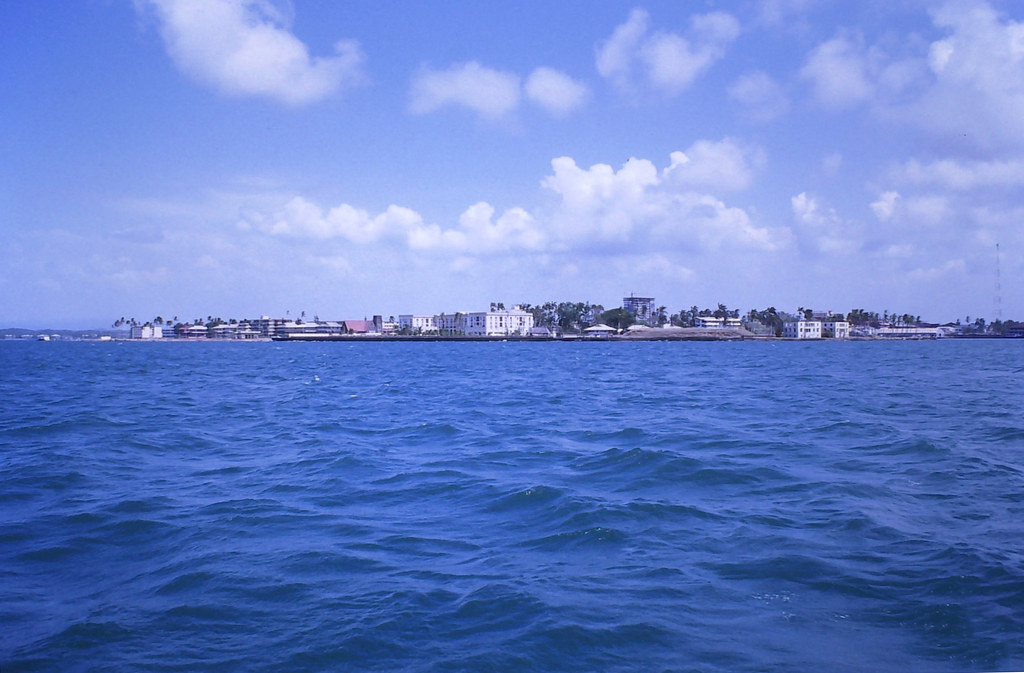Quite some time ago, way back in April 2012, Twelve Mile Circle posted an article called First Name, Surname Symmetry. It involved places where different levels of government nestled to form the full names of important people. Examples included the city Hernando, in De Soto County, Mississippi; the town of George in the state of Washington; and the settlement of Thomas City in Jefferson County, Florida.
They paid tribute to dignitaries on multiple levels. I’d pretty much forgot about that earlier article even though it generated a good amount of attention at the time.
Now I’ve stumbled upon an international example and it felt like the right time to tug the thread just a little bit more. So I turned my sights to Central America.
Cristóbal, Panama

The town of Cristóbal, with fifty thousand residents on Panama’s Atlantic Coast (map) wouldn’t seem to conform to the established pattern at first glance for an exclusively English-speaking person such as myself. Nonetheless it clicked when I noticed Cristóbal’s placement within Colón Province.
Some ancient piece of trivia lodged deep within the folds of my memory popped to the surface. The person called Cristóbal Colón in Spanish was Christopher Columbus in English. That created perfect first name, surname symmetry down in Panama, albeit in a language I didn’t understand much about otherwise.
Zonians

The town figured prominently in early 20th century Panamanian history. It served as a staging point and an administrative headquarters for the Panama Canal Commission upon its establishment. It also fell within the Panama Canal Zone beginning in 1903. That’s when the U.S. government paid newly-independent Panama $10 million for perpetual control of the zone. Thus, Cristóbal transferred to the territorial possession of the United States at that time. The U.S. citizens who lived within Cristóbal and the remainder of the territory became Zonians.
“The zone was an area of 533 square miles that ran the course of the canal and was controlled by the US. Families were given generous benefits, including subsidised housing, ample holiday time, well-stocked commissaries and attentive staff… Its residents enjoyed the beautiful weather and more relaxed lifestyle of Panama, while also living in comfortable American-style housing, experiencing a top-notch American education and enjoying all the perks of US citizenship.”
Some fifty thousand U.S. citizens lived in the zone at any given time. It swelled closer towards a hundred thousand during times of war, given the strategic importance of the canal. They created a little slice of home down there. They also created a festering pile of animosity with the local Panamanian populace who endured an entirely less privileged lifestyle.
The arrangement could not continue given increasing tensions between the two even if the agreement was supposed to last forever. So the canal zone reverted back to Panama in carefully controlled pieces between 1979 and 1999. The nations laid out these provisions in the Torrijos-Carter Treaties.
More Recently
Cristóbal hit on hard times after that — as did much of Panama — and earned an unsavory reputation for criminal activity. Eventually the town began to gain its footing in recent years via the tourist trade because it offered great access to the Canal. Cruise ships often dock there now.
Colón, the province, also had a capital city called Colón. Over time the city of Colón grew and subsumed Cristóbal. Still, Cristóbal existed as a place name. Nonetheless, it might be described more as a neighborhood of Colón as it stands currently. The first name, surname symmetry still existed although on a couple of distinct levels: Cristóbal as a part of the City of Colón, and Cristóbal a part of the province of Colón.

Leave a Reply